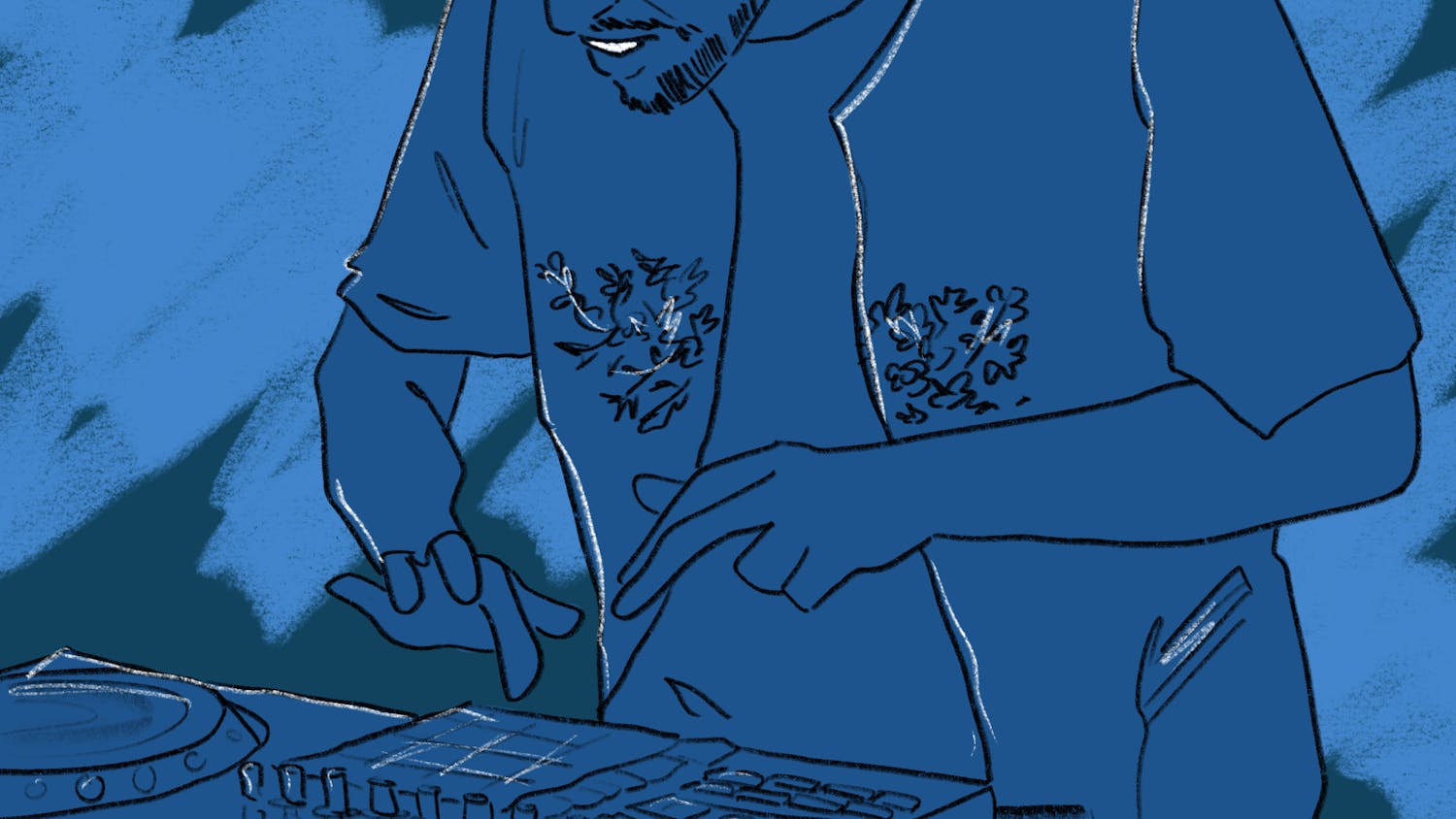In the late 1960s, the reverberating spirit of the hippie movement blossomed outward from the intersection of the San Francisco streets Haight and Ashbury, full to the brim with rock and roll, "free love," experimental drug use and psychedelic art.
Organized by the San Diego Museum of Art and drawing largely from the private collection of Paul Prince, the Hood Museum's captivating exhibit, "High Society: Psychedelic Rock Posters of Haight-Ashbury," is sure to please all viewers. Juliette Bianco '94, Exhibitions Manager at the Hood, believes that the exhibit will beckon a broad range of students, faculty and community members with its far-reaching historical roots, its contemporary appeal and its promise of colors and designs to delight the eye.
The artists of these late '60s rock posters "freshly translated their experiences onto paper," Bianco said. Their works were meant to be ephemeral and utilitarian, often displayed for only days at a time, then torn down to make room for the next advertisement in the intense period during which concerts and parties raged daily throughout Haight-Ashbury. Nevertheless, the distinctive style of the era achieved celebrity through nonconformity. The artists of psychedelic rock posters defied conventional color theory, incorporated imagery in a nontraditional manner and experimented with undulating lettering that approached illegibility.
The new Hood exhibit incorporates historical background and the later movement to a surrealist basis but concentrates mainly on the five most prominent designers of psychedelic rock posters of the era: Wes Wilson, Stanley Mouse, Alton Kelley, Victor Moscoso and Rick Griffin.
The first artist to experiment with the distorted lettering that is characteristic of these works, Wes Wilson is often considered responsible for pioneering the psychedelic style. Of the five artists, he was "the most interested in incorporating fine art forms," according to Sally Tomlinson in the San Diego Museum of Art's publication on the exhibit. Because Wilson cited the work of Alphonse Mucha as inspiration, some of Mucha's work from the Hood Museum's permanent collection is also on display.
Victor Moscoso graduated from the Cooper Union and Yale and taught at the San Francisco Art Institute in the 1960's. Although Moscoso received the most formal training of the five artists, his style was a rejection of his education. Josef Albers, his teacher, had written an extremely influential work on color theory, but Moscoso rejected his teacher's theory entirely and deliberately paired colors whose intensity would create a harsh, vibrating effect.
The work of Stanley Mouse and Alton Kelley, often collaborative, is of a noticeably light-hearted nature. Both art school dropouts, the two often incorporated famous images into their posters. Together, they designed the trademark Skull and Roses icon for The Grateful Dead and created many posters for the Avalon Ballroom and Fillmore Auditorium.
Like Mouse and Kelley, Rick Griffin used recognizable images in his posters, drawing heavily from imagery and lettering evocative of the American West. His style was a result of a past affected by Native American tradition and customs, and it was the familiarity of his work that was thought to have had a special impact on the younger audience.
Together, the works of these artists form the largest collection of psychedelic rock posters organized in 25 years. The exhibit has been arranged in a format such that the works can be viewed not only chronologically but also in the presence of some of their historical roots through the Fin-de-Sicle posters of Mucha and Bradley. A film by Bob Sarles entitled "Feed Your Head: The Psychedelic Era" and the photography of Gene Anthony compliment the posters and provide further insight into the era.
The Hood Museum Shop is even stocked with DASH-friendly goodies appropriate to the era, and the opening student party to be held April 12 is not to be missed. "High Society: Psychedelic Rock Posters of Haight-Ashbury" will attract viewers for the art, the music and the refreshments -- but don't forget your '60's garb, Bianco said.



